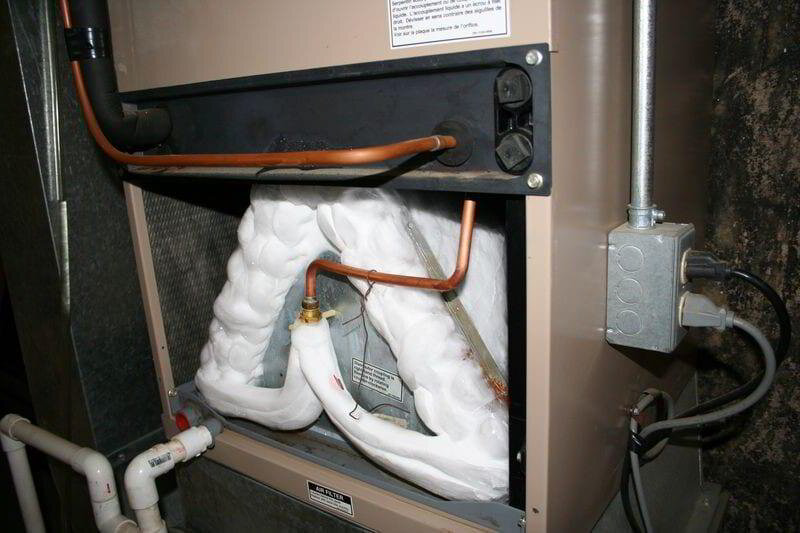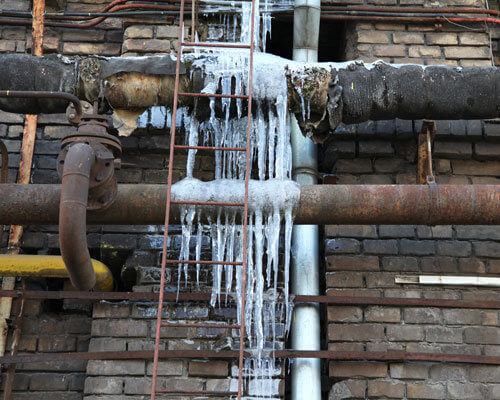How to Handle a Frozen AC Pipe: Complete Guide
How to Handle a Frozen AC Pipe: Complete Guide
Blog Article
What are your thoughts regarding Air Conditioner Frozen? How To Fix your Frozen AC Line?

Introduction
Finding that your air conditioner pipeline is iced up can be worrying, specifically throughout warm summer months when you rely on your ac unit the most. Understanding what to do in such a situation is critical to stop more damages to your cooling system and ensure your convenience inside.
Comprehending the Causes
A number of elements can contribute to the freezing of an air conditioner pipeline. Comprehending these causes can assist you deal with the issue efficiently.
Lack of Airflow
One typical source of a frozen air conditioner pipe is inadequate air movement. When the air flow over the evaporator coil is limited, it can cause the coil to go down below freezing temperature, causing ice development on the pipe.
Reduced Refrigerant Levels
Not enough refrigerant degrees in your air conditioner system can also lead to an icy pipeline. Reduced refrigerant levels can trigger the stress in the system to drop, resulting in the freezing of dampness on the evaporator coil.
Winter Conditions
In cooler environments, freezing temperatures outside can add to the cold of a/c pipes. If your air conditioning system is not correctly protected or if there are leakages in the ductwork, cool air can penetrate the system, triggering the pipeline to ice up.
Dirty Air Filters
Dirty or clogged air filters can limit air movement in your a/c system, leading to numerous issues, consisting of a frozen pipeline. It's important to change or cleanse your air filterings system consistently to make sure correct air movement and avoid ice accumulation.
Indicators of a Frozen AC Pipe
Recognizing the indications of an icy air conditioner pipe is vital for prompt action.
Decreased Airflow
If you see a substantial decline in air movement from your vents, it can suggest an icy pipeline.
Ice Buildup on the Pipe
Noticeable ice build-up on the cooling agent line or the evaporator coil is a clear indication of a frozen air conditioning pipe.
Strange Sounds from the Unit
Uncommon audios, such as hissing or bubbling, coming from your air conditioner device can indicate that there's ice existing on the pipeline.
Immediate Actions to Take
When confronted with a frozen AC pipe, it's vital to act promptly to prevent more damage to your air conditioning system.
Shutting off the a/c
The primary step is to switch off your air conditioning system to stop the system from running and aggravating the issue.
Looking for Blockages
Evaluate the location around the interior device for any type of obstructions that might be obstructing air movement, such as furniture or drapes.
Thawing the Pipe
You can make use of mild techniques like positioning towels soaked in warm water around the frozen pipeline to help thaw it gradually.
Preventive Measures
Taking safety nets can assist avoid future events of a frozen a/c pipe.
When DIY Methods Fail
If your attempts to thaw the pipe or address various other concerns are unsuccessful, it's time to call a professional.
Relevance of Hiring a Professional HVAC Technician
A qualified HVAC service technician has the know-how and tools necessary to identify and repair issues with your a/c system securely and successfully.
Regular Maintenance Checks
Schedule normal maintenance checks with an expert HVAC technician to make sure that your a/c system is running efficiently.
Altering Air Filters
Consistently replace or cleanse your air filters to avoid air movement constraints and maintain ideal performance.
Insulating Exposed Pipes
If your a/c pipes are revealed to chilly temperature levels, take into consideration insulating them to avoid cold during cold weather.
Looking For Professional Help
If DIY methods stop working to deal with the problem or if you're unclear about exactly how to continue, it's ideal to seek help from a certified HVAC technician.
Final thought
Dealing with a frozen air conditioner pipe can be a frustrating experience, yet recognizing just how to respond can help decrease damages and recover convenience to your home. By comprehending the causes, acknowledging the indications, and taking timely activity, you can properly address the concern and avoid future occurrences.
What to Do If Your AC Line Is Frozen
Make Sure All Supply and Return Air Vents Are Open
If you notice problems with airflow, the first thing you should do is check your supply and return vents. Supply vents distribute clean, conditioned air throughout your home. As this air becomes stale, it’s pulled into the return vent, where it’s reconditioned before being sent back out through the supply vent.
When these vents are closed, air won’t flow in the home. Before examining your AC, check the vents in every room and ensure they’re all open.
Check for a Dirty Air Filter
Another possible cause of limited airflow is a dirty air filter. Your air conditioner’s filters catch elements you don’t want to breathe in, such as dirt and dust. Over time, filters can become clogged, ultimately blocking air from flowing in and out. The lack of airflow can then cause the entire coil to freeze and will completely restrict any air from moving through it. The AC may need to be powered off for one to two days to allow the coil to thaw after replacing the filter to allow proper functioning of the unit. This debris can also accumulate on your AC’s evaporator coil, requiring a more serious repair. In general, air filters should be cleaned regularly (about every two weeks).
Assess Your Outdoor Unit
In addition to checking your AC, assessing the outdoor unit is a good idea. Also known as the condensing unit, it works with your interior unit to release heat outside. An issue with the outdoor unit can result in rising internal temperatures.
Overgrown Shrubs or Clogged Leaves
From leaves and twigs to shrubs and debris, there’s no shortage of outdoor elements that can accumulate around your condensing unit. When these elements get lodged inside the unit, they can block airflow. Fortunately, removing the blockage can solve the problem.
Sounds of a Broken Fan
Shrubs and leaves aren’t the only things that can impede your outdoor unit’s airflow. If the fan is broken, the unit won’t be able to properly get rid of heat — which means the internal temperature won’t go down. First, make sure the fan is spinning. If it is, check for the following sounds of a broken fan:
Buzzing Rattling Screeching Hissing Clicking Preventative Measures
Nobody wants to deal with a frozen AC line. In addition to causing problems with your air conditioner, they require professional repairs. On the bright side, there are preventative measures you can take to help ensure this issue doesn’t arise in the first place.
https://www.coopergreenteam.com/blog/what-to-do-if-ac-line-frozen

We hope you enjoyed our post on Have a Frozen AC Line? Here’s How to Fix It. Thanks a ton for finding the time to read through our article post. Appreciated our blog entry? Please share it. Help another person discover it. I love reading our article about What Do I Do If My AC Pipe Is Frozen.
Order Repair Report this page